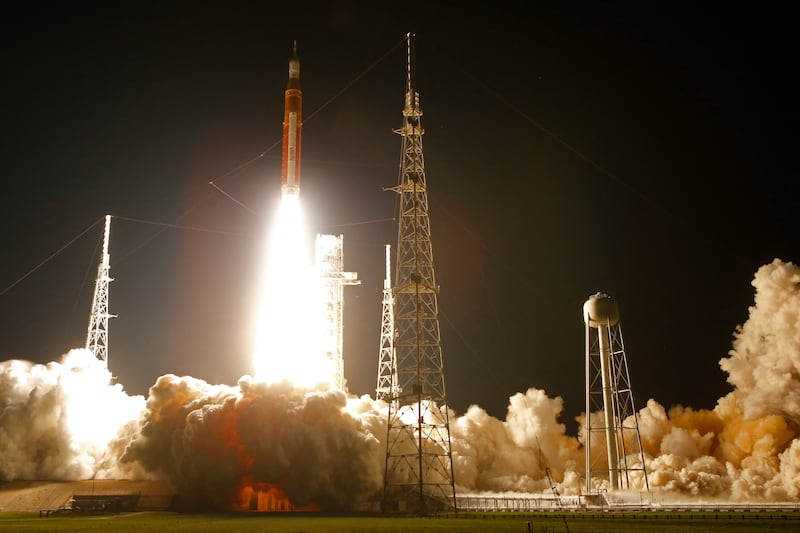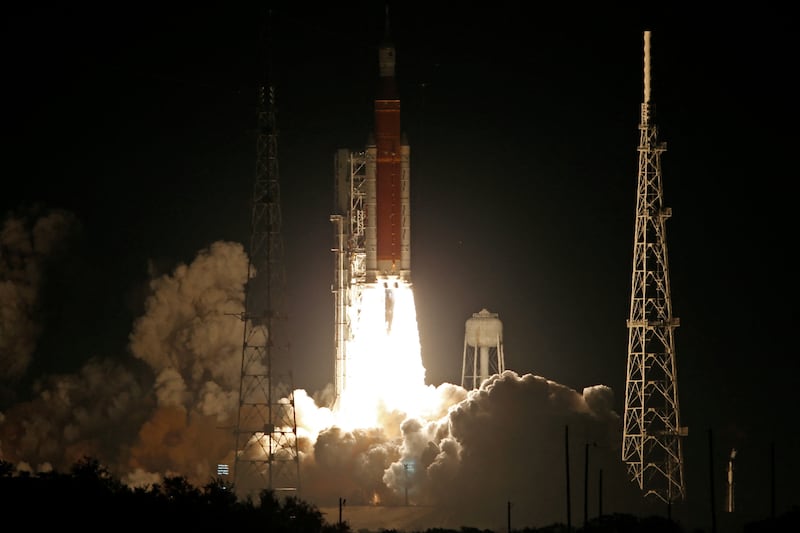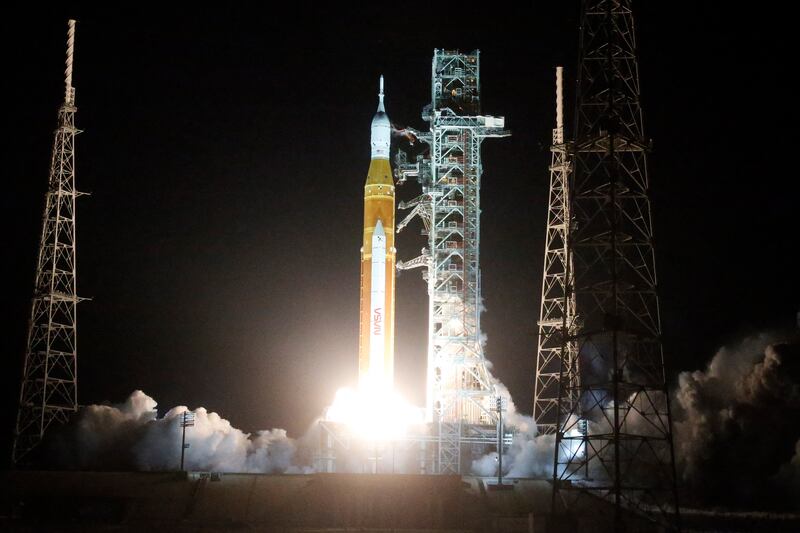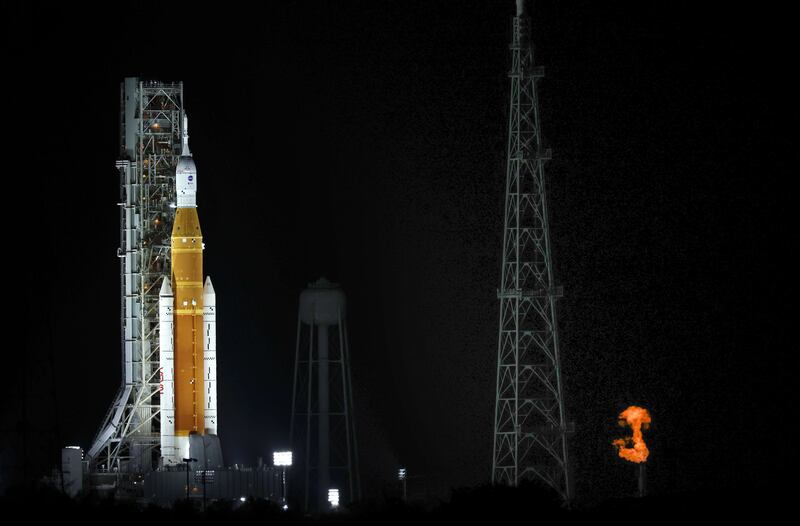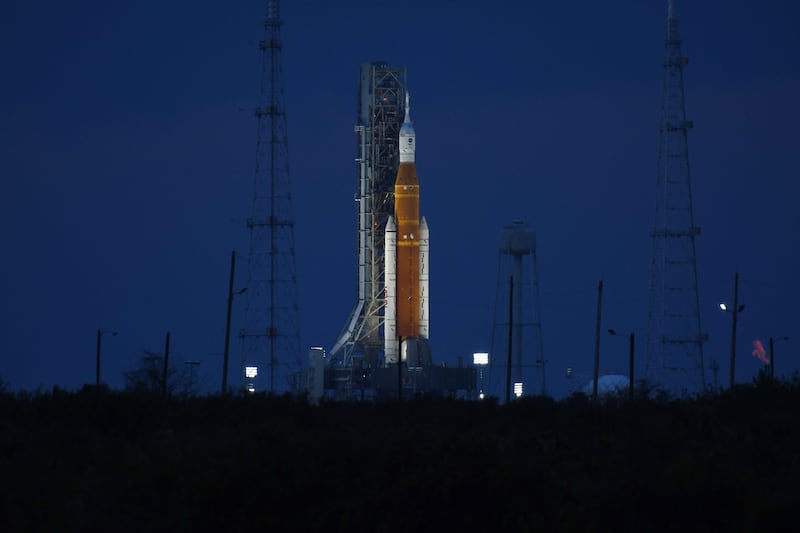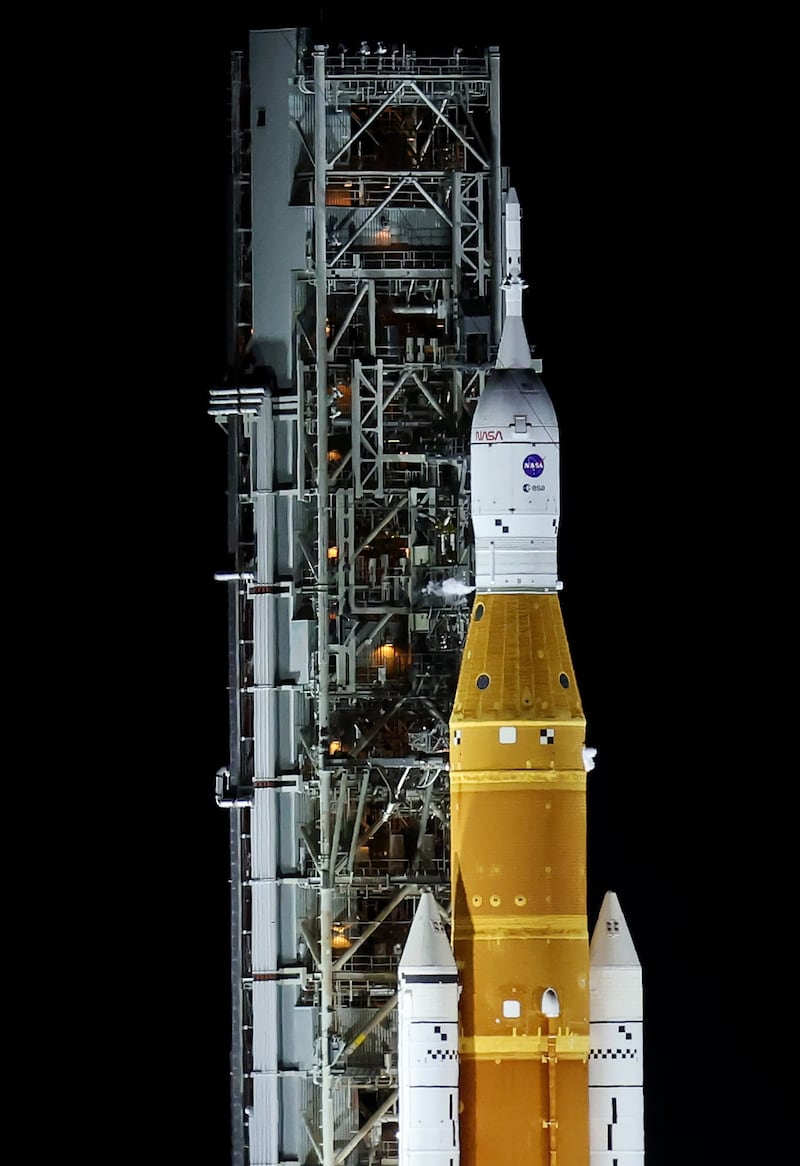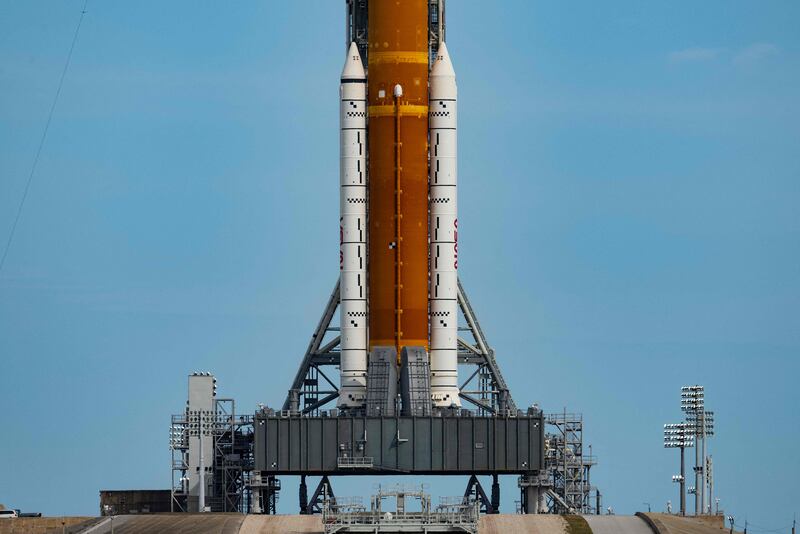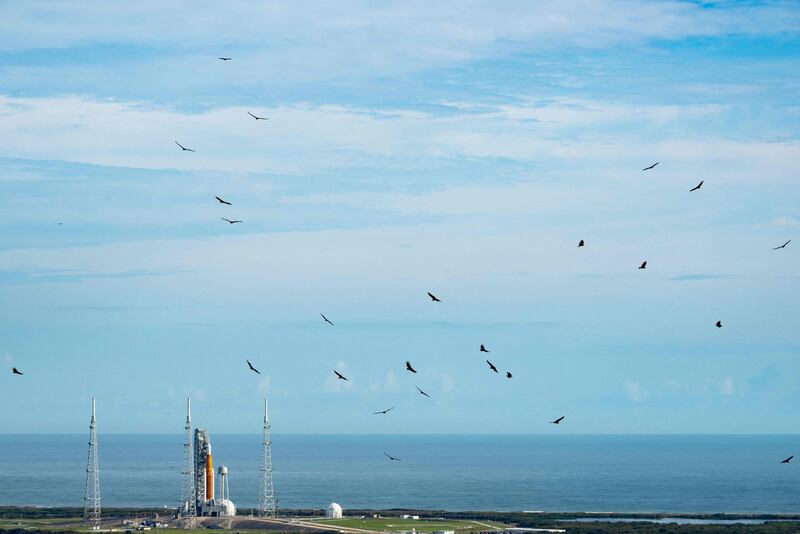Last December marked 50 years since humankind last set foot on the Moon in the final mission of the Apollo era.
But US space agency Nasa is preparing to write a new chapter in space exploration with the Artemis programme.
On Wednesday, it will attempt to launch its enormous rocket, the Space Launch System (SLS), with the Orion spacecraft on top of it, from the Kennedy Space Centre in Florida.
The world’s most powerful rocket will lift-off with 3,991 tonnes of thrust, soaring at speeds of 40,233 kilometres per hour in about eight minutes to reach space.
This is part of Artemis 1, an uncrewed test flight around the Moon that will measure the rocket and spacecraft's performance.
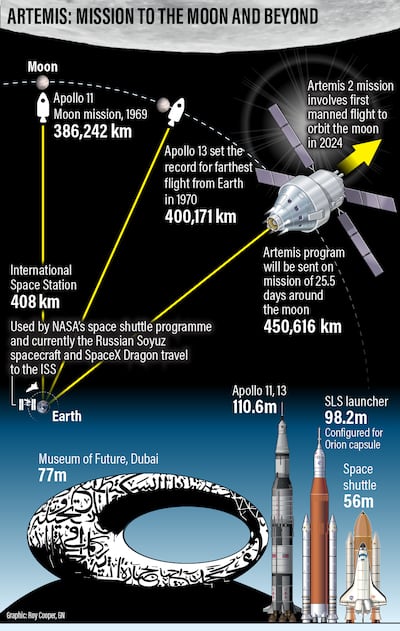
It would mark the beginning of a new space exploration era for the agency if successful, with crewed flights to the lunar surface in future.
What time is the Artemis launch?
The rocket was moved back to Launch Pad 39B on November 4 after two failed launch attempts earlier this year.
Since then, it has survived Hurricane Nicole, which struck Florida last week.
Only minor issues on the spacecraft were reported after the storm and managers have given the green light for a launch attempt on Wednesday, November 16, with a two-hour launch window opening at 10.07am GST.
There are also back-up dates on November 19 and 24.
Before the mega event, The National explains eight key things to know about this rocket and the Orion spacecraft.
Powerful boosters
Two solid boosters provide more than 75 per cent of the rocket’s thrust during the first two minutes of flight.
Each is 17 storeys tall, burns about six tonnes of propellant every second and generates more thrust than 14 four-engine jumbo commercial planes.
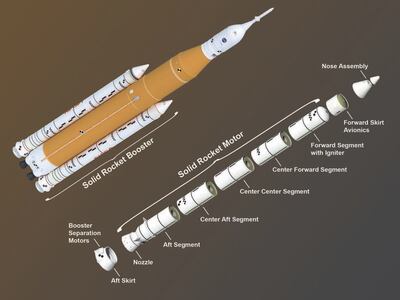
To achieve deep space missions, the rocket will be upgraded through the years so it can carry heavier payloads.
For the first three Artemis missions, Nasa is using configuration SLS Block 1, which can send 27 tonnes to orbits beyond the Moon.
Impressive core stage engines
Propulsion for the rocket’s core stage will be provided by four RS-25 engines, which powered the Space Shuttle for three decades and completed 135 missions.
About 16 of these shuttle engines are being upgraded to meet the performance needs of the SLS.
During the flight, the four engines provide about 907 tonnes of thrust.
Lots of fuel
To power these engines, the rocket’s core stage has two large storage tanks that have to be filled with more than three million litres of liquid hydrogen and liquid oxygen – together known as propellants.
Without the fuel, it would be impossible to power these engines and enable the rocket launch.
Orion spacecraft
Orion is the spacecraft that will launch on the SLS rocket.
It will carry crew to space and provide them with safe re-entry into Earth.
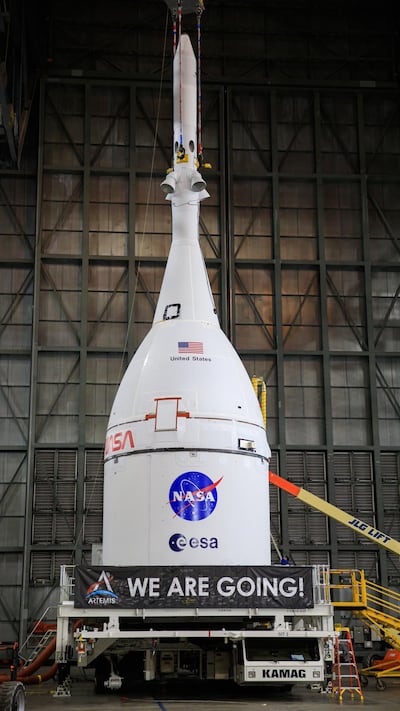
The crew module can transport four humans to the Moon and offers them a safe habitat.
It is equipped with a launch abort system that can activate within milliseconds and allow for a safe landing.
What sends Orion to the Moon?
For SLS Block 1, the Interim Cryogenic Propulsion Stage will help send Orion to the Moon once it has been separated from the rocket.
This propulsion stage uses one RL10 engine, made by US-based Aerojet Rocketdyne.
The engine is powered by liquid hydrogen and liquid oxygen, which helps generate 11.2 tonnes of thrust.
Failed launch attempts
Nasa's first launch attempt of Artemis 1 on August 29 failed owing to what engineers believed was a rocket engine cooling problem.
Its second attempt on September 3 also failed after engineers detected a hydrogen leak.
Nasa was targeting September 27 for a lift-off before Hurricane Ian hit.
When does it actually launch?
Artemis 1 will be the first mission under the programme.
It is an uncrewed, six-week mission that is expected to launch from the Kennedy Space Centre on November 16.
Orion will spend about six days in the Moon’s orbit collecting data, so mission control can assess its performance.
When will humans return to Moon?
The Artemis 2 mission involves sending the first crewed mission to orbit the Moon in 2024.
It would be the first time humans have reached the Moon since the Apollo days.
A crew of four will perform a lunar flyby for about 21 days before returning to Earth.
Artemis 3 will be the first crewed lunar landing mission, which is likely include a woman.
The crew would dock the Orion with the Lunar Gateway – a planned Moon orbiting station – before boarding the landing system to touch down on the surface.
Artemis 3 has been delayed until 2025.
